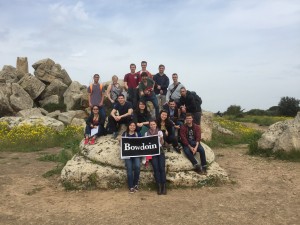
Temple G at Selinunte
Selinunte was one of my favorite sites we got to visit on this trip. The beauty of the ruins of enormous Doric temples among the spring wildflowers was like a dream. The sheer amount of ruins, as well as the level of preservation of these temples was amazing. Moreover, it was incredible to explore a site described by Thucydides in his History of the Peloponnesian War over two thousand years before.
Selinunte was one of the Greek colony cities – founded by members of Megara Hyblaea – which the Athenian historian explains, antagonized the city of Egesta (modern day Segesta). It was this conflict between Egesta and Selinunte which galvanized the Athenian decision to undertake the fateful Sicilian Expedition. Anyone familiar with this expedition will be familiar with its disastrous outcome (sites relating to which we got to see later on this trip!).
This site was also a wonderful example of the historical differences in the construction of Doric temples which allow historians to date temples of this period. The column capital upon which the group is sitting comes from Temple G at Selinunte (it is upside down here), and as one can observe, the echinus (the fluffy hemispherical part we are sitting on) is less rounded, which dates the initial construction of this temple to 530 BCE. The architectural styles and refinements change throughout the ruins, indicating that this temple was under construction through the transition between the Archaic and Classical periods.